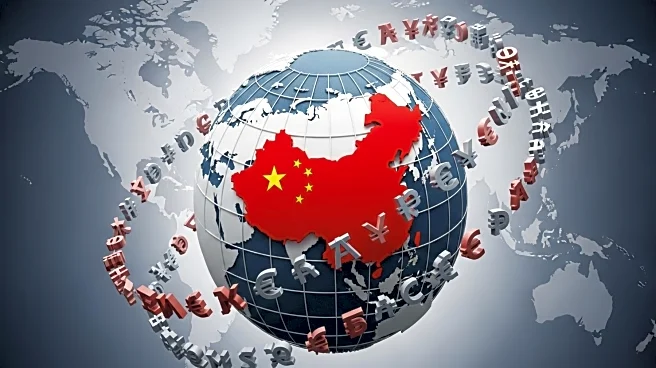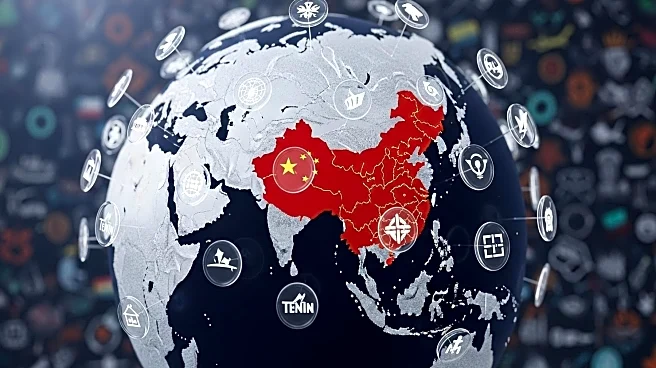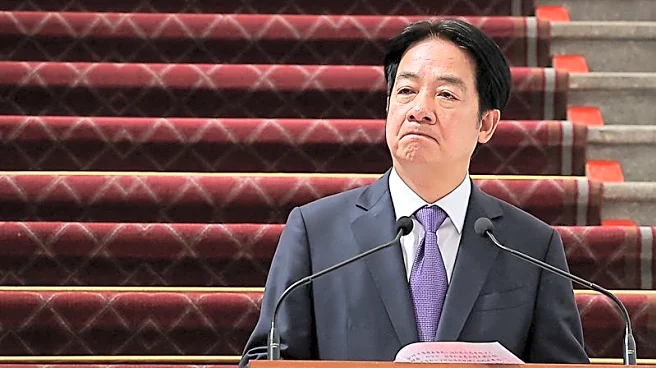What is the story about?
What's Happening?
The World Bank has revised its 2025 growth forecast for China, increasing it to 4.8% from the previous 4% prediction made in April. This adjustment comes despite ongoing trade tensions between China and the U.S., which have seen tariffs on Chinese imports temporarily rise to over 100% before a trade truce was reached. Currently, U.S. tariffs on China stand at 57.6%, more than double the rate at the beginning of the year. China's economy has been bolstered by government stimulus and targeted consumer trade-in programs, which have supported retail sales. Additionally, China's exports have continued to grow, particularly to Southeast Asia and Europe, offsetting a decline in exports to the U.S. Businesses have increased orders in anticipation of higher tariffs, further supporting export growth.
Why It's Important?
The revision of China's growth forecast by the World Bank highlights the resilience of China's economy in the face of significant trade challenges with the U.S. The ongoing trade tensions have implications for global economic stability, as the U.S. and China are major economic players. The increase in tariffs could lead to higher costs for U.S. consumers and businesses, potentially affecting economic growth. Conversely, China's ability to maintain export growth despite these challenges underscores its strategic economic positioning and adaptability. The situation also reflects broader geopolitical dynamics, as countries in Southeast Asia and Europe become increasingly important trade partners for China.
What's Next?
Looking ahead, the World Bank projects China's GDP growth to slow to 4.2% in 2026, partly due to anticipated slower export growth. Economists expect Beijing to reduce stimulus measures to prevent public debt levels from rising too quickly. The trade truce between the U.S. and China is set to last until mid-November, and its expiration could lead to renewed tensions and further economic adjustments. Stakeholders, including businesses and policymakers, will be closely monitoring these developments to assess their impact on global trade and economic strategies.
Beyond the Headlines
The ongoing trade tensions between the U.S. and China could have long-term implications for global trade patterns and economic alliances. As China strengthens its trade relationships with Southeast Asia and Europe, there may be shifts in global supply chains and economic dependencies. Additionally, the situation raises questions about the sustainability of government stimulus measures and their impact on public debt. The evolving trade dynamics could also influence future policy decisions and international economic cooperation.
AI Generated Content
Do you find this article useful?














